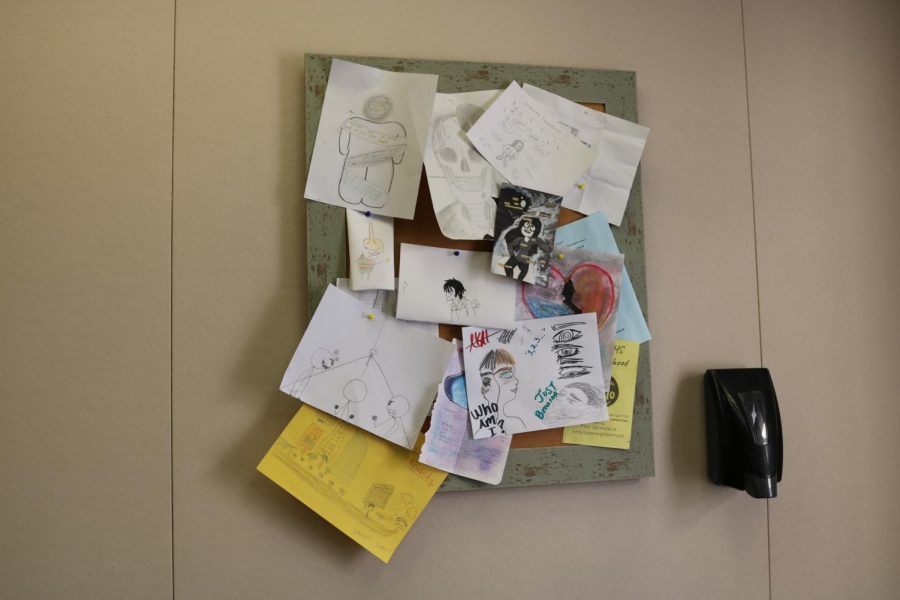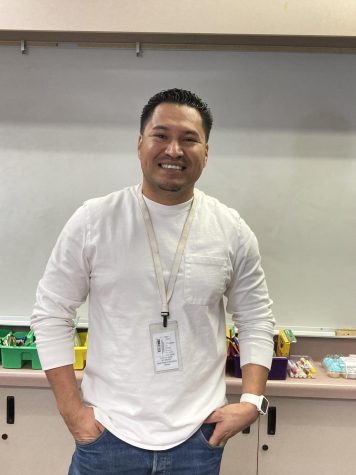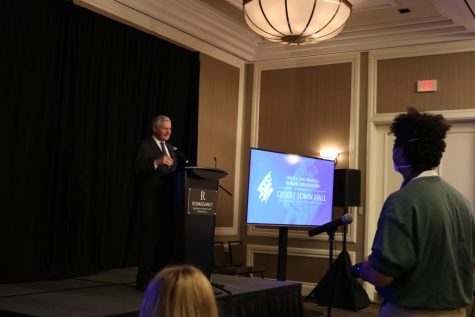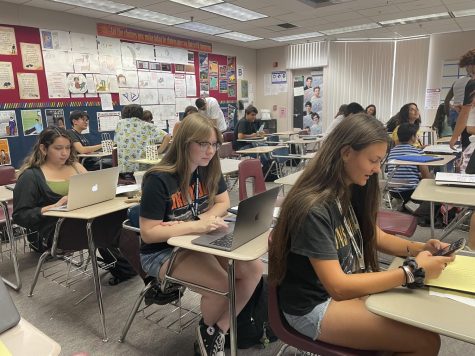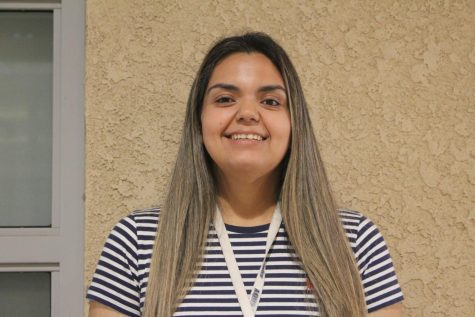Staff reflect on suicide prevention month
While Suicide Prevention Month took place in September, it’s usually a time to spread more awareness to find help and support.
“Vent art” in room 415.
When the COVID-19 pandemic spiked in early 2020, many feared that isolation could cause an increase in death by suicides.
In 2019, there were 47,511 suicides and 1.38 million attempts at suicide in the United States. These aren’t just numbers, but people’s lives. They are family members and they are friends.
While Suicide Prevention Month took place in September, it’s usually a time to spread more awareness about the signs of suicide and ways to lead away from suicide.
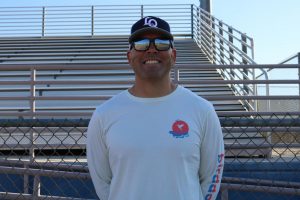
Brian Gleeson is a P.E. teacher at La Quinta High School.
Brian Gleeson has been a P.E. teacher at La Quinta High School since 2008. He remembers where he was and how he felt when he found out his best friend died by suicide.
“It was not good at all,” he said. ”It feels like it was yesterday.”
When Gleeson found out about the death of his best friend, he coped by thinking of all the good times they had shared.
One of the times he remembers is when he and his best friend went to a baseball game in Anaheim and they happened to get a good portion of the crowd to cheer, “Let’s go, Gleeson!”
To cope with his mental health, Gleeson works out to keep his mind from wandering about the bad things in life. If he decides to not work out, then he is left alone with his thoughts.
Gleeson hopes that his students realize that there is a bigger picture after the pandemic — that there is light at the end of the tunnel.
He also talks about mental health to his students, such as ways you can take a break or even talk about coping mechanisms. Gleeson always lets his students know that he is there for them.

Linda Hornberger is a math teacher at La Quinta High School.
Linda Hornberger, a math teacher at LQHS, has gone through a similar event in her life as well.
Hornberger lost a friend from high school when she was in college at Iowa State University. She was stunned when she found out. No adults helped her through this trying time.
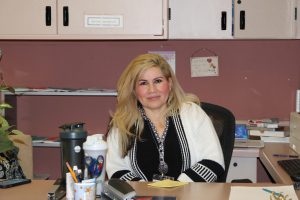
Elena Labastida is the mental health therapist at La Quinta High School.
“Things have improved greatly since then, you know,” she said. “Suicide was not talked about 40 years ago.”
Elena Labastida is the mental health therapist at the high school. She encourages students to express how they feel through artwork.
Walking into room 415, Labastida’s classroom, a corkboard is filled with artwork by students—sometimes called “vent art.”
“Your thoughts and feelings are valid and you have the right to feel the way that you feel,” she said. “Feelings are temporary. With the right help and support, it will pass.”
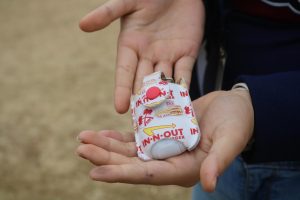
An example of a coping mechanism is to apply scented lotion to your hands and to breathe the scent in.
“I turned to self-harm and drugs but I learned coping mechanisms,” said a student who has asked to remain anonymous for privacy reasons. (The student later received support from experts and is now a mental health advocate.) One of those coping mechanisms is to apply lotion to their hands and breathe it in, as well as to listen to music.
Coping mechanisms come in all shapes and sizes. Coping mechanisms for self-harm tend to be a distraction—such as listening to music, cleaning, crafting, playing games, and even reading a book.
Journal writing is another effective coping technique by writing down whatever comes to mind. It helps to make a schedule to remain consistent with this strategy.
In a virtual e-flyer distributed via Peachjar, the school district noted that they are committed to “providing comprehensive supports and services to help our students thrive. Whatever challenges you may be facing, we are here to help. If you or a loved one need assistance, we encourage you to take advantage of the resources [offered].”
These are the school district’s resources:
- General wellbeing: The DSUSD website maintains an extensive list of resources for social-emotional wellness, addressing topics such as mindfulness, resilience, exercise and movement, behavioral sports, creativity and more. Click here to access the wellness webpage.
- Need to talk to someone?: DSUSD employs a variety of mental health staff who are available to work with you and your family. To get help, complete the online Request for Assistance form or call your child’s school and ask to speak to the school counselor. To access the Request for Assistance form, click here.
- Struggling with academics?: Communicating with the teacher is the best first step for academic concerns. If the concern is beyond what can be supported in the classroom, you can complete the online Request for Assistance form. The Request for Assistance form will be forwarded to the school counselor who will work with staff to determine an appropriate support. To access the Request for Assistance form, click here.
- Looking for ongoing counseling: DSUSD provides district families mental health coordination through a partnership with Care Solace. Click here to access the DSUSD Care Solace portal to connect with a Care Solace coordinator.
- Experiencing a mental health emergency?: If you have an immediate concern about yourself or someone else, please call 911 or reach out to the 24-hour Riverside University Behavioral Health Helpline at 951-686-4357 or call the National Suicide Prevention Lifeline at 800-273-8255.
If you personally or someone you know is struggling, the back of your school ID card — for both students and staff — provides phone numbers to support you:
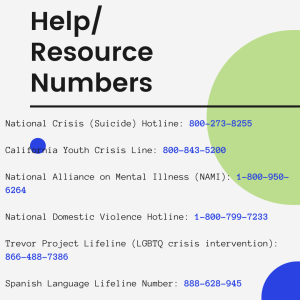
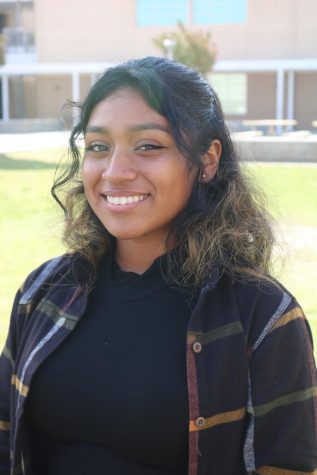
Isabella Bojórquéz is a first-year journalist and is a Marvel enthusiast. She prefers to use the name "Busy," as she is seen participating in cross country, track, and dance. She enjoys reading, writing, drawing, crafts, playing instruments, and being outside.

Isabella Bojórquéz is a first-year journalist and is a Marvel enthusiast. She prefers to use the name "Busy," as she is seen participating in cross country, track, and dance. She enjoys reading, writing, drawing, crafts, playing instruments, and being outside.

